5.3: Applications of Trigonometry
( \newcommand{\kernel}{\mathrm{null}\,}\)
Trigonometry has many applications in science and engineering. In this section we will present just a few examples from surveying and navigation.
The angle made by the line of sight of an observer on the ground to a point above the horizontal is called the angle of elevation. In Figure 5.3.1, ∠BAC is the angle of elevation.
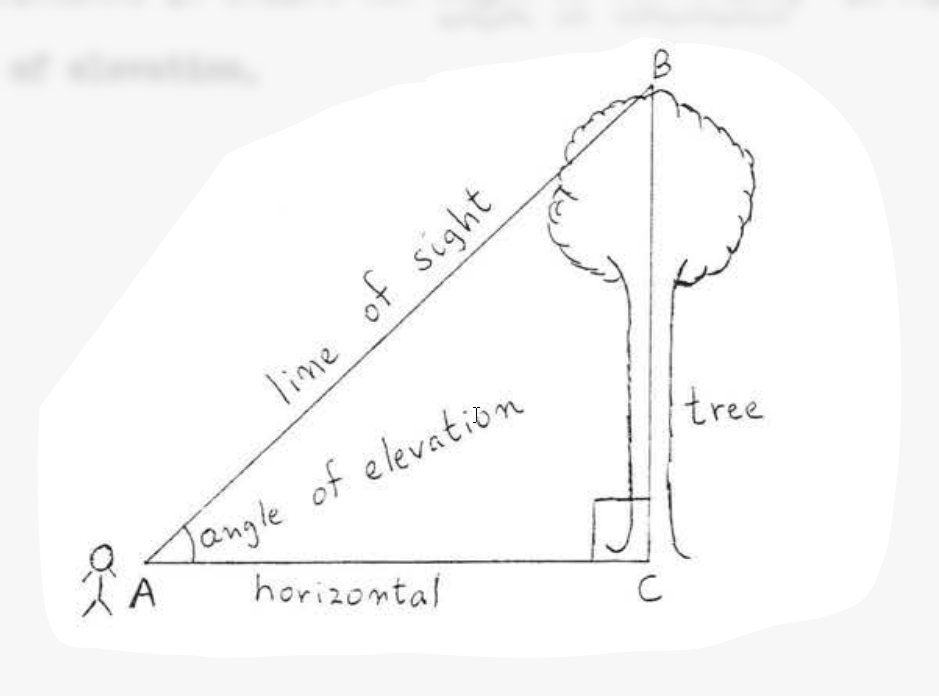
At a point 50 feet from a tree the angle of elevation of the top of the tree is 43∘. Find the height of the tree to the nearest tenth of a foot.
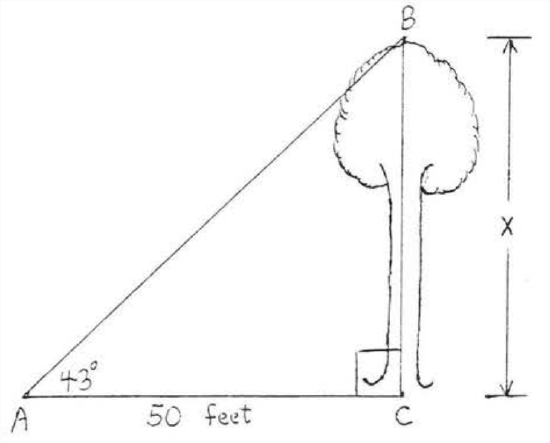
Solution
Let x= height of tree.
tan43∘=x50.9325=x50(50)(.9325)=x50(50)46.6250=x46.6=x
Answer: x=46.6 feet.
The angle made by the line of sight of an observer above to a point on the ground is called the angle of depression. In FIgure 5.3.2, ∠ABD is the angle of depression.
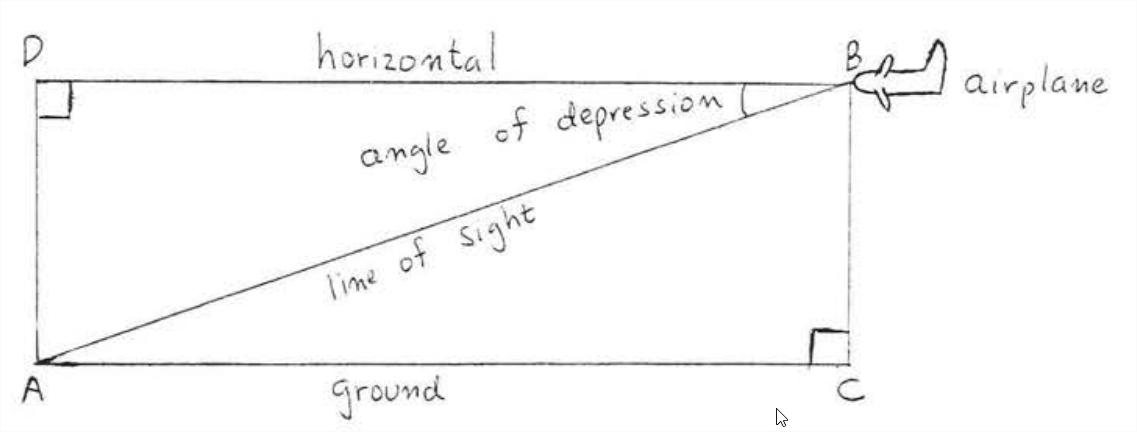
From an airplane 5000 feet above the ground the angle of depression of an airport is 5∘. How far away is the airport to the nearest hundred feet?

Solution
Let x= distance to airport. ∠ABC=85∘.
cos85∘=5000x.0872=5000x.0872x=5000x=5000.0872=57,300
Answer: 57,300 feet
A road rises 30 feet in a horizontal distance of 300 feet, Find to the nearest degree the angle the road makes with the horizontal.
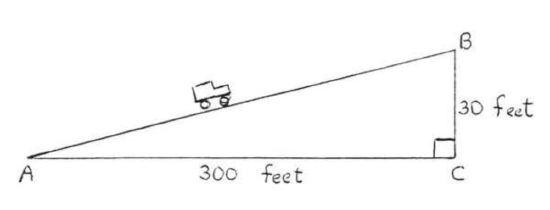
Solution
tanA=30300tanA=.1000∠A=6∘
Answer: 6∘.
Problems
1. At a point 60 feet from a tree the angle of elevation of the top of the tree is 40∘. Find the height of the tree to the nearest tenth of a foot.
2. At a point 100 feet from a tall building the angle of elevation of the top of the building is 65∘. Find the height of the building to the nearest foot.
3. From a helicopter 1000 feet above the ground the angle of depression of a helinort is 10∘. How far away is the heliport to the nearest foot?
4. From the top of a 100 foot lighthouse the angle of depression of a boat is 15∘. How far is the boat from the bottom of the lighthouse (nearest foot)?
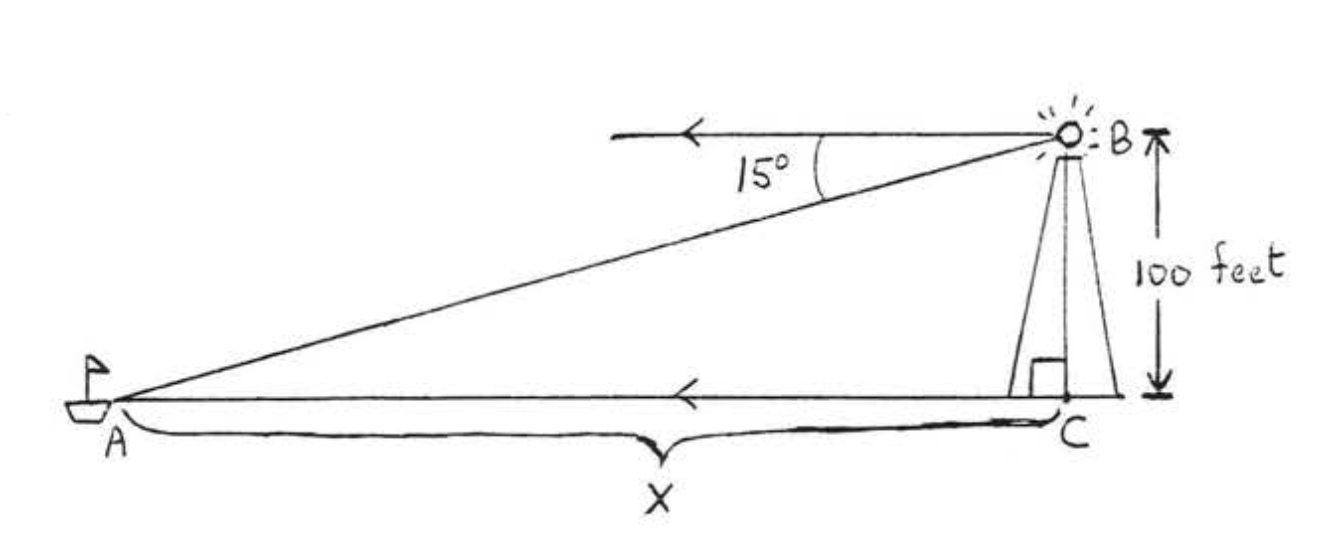
5. A road rises 10 feet in a horizontal distance of 400 feet. Find to the nearest degree the angle the road makes with the horizontal.
6. If a 20 foot telephone pole casts a shadow of 43 feet , what is the angle of elevation of the sun?
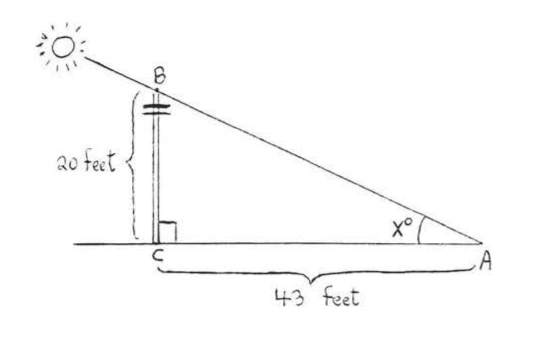
7. A 20 foot ladder is leaning against a wall, It makes an angle of 70∘ with the ground. How high is the top of the ladder from the ground (nearest tenth of a foot)?
8. The angle of elevation of the top of a mountain from a point 20 miles away is 6∘. How high is the mountain (nearest tenth of a mile)?


